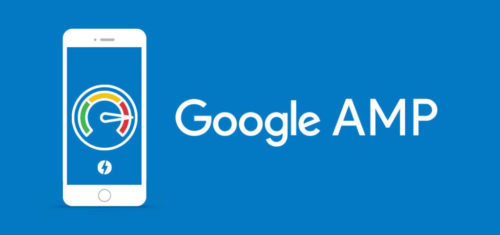Google launches new Testing Tool for Accelerated Mobile Pages
Stephen McCance October 27, 2016

This month Google launched a new AMP testing tool in the Google Search Console, which combines AMP and structured data errors with a live preview.
Around this time last year Google announced their Accelerated Mobile Pages Project, with the goal to improve speed when browsing on mobile devices.
At its core, AMP is essentially a stripped-down form of HTML, that is designed to be super lightweight and so provides really fast loading. The aim of it is to help web publishers create mobile-optimised content that loads instantly on all devices.
On February 23rd of this year, Google officially integrated AMP-powered web pages into its mobile search results. AMP-coded pages appear in a mobile search results ‘carousel’ and they feature an AMP thunderbolt icon alongside the acronym ‘AMP’.
Google claims that a page created with AMP HTML can load anywhere from 15 to 85% faster than the non-AMP version of that page. It’s been a year since Google launched AMP, and there are now 600 million AMP pages on 700,000 domains.
So what’s new? Well last week, Google launched a new testing tool for AMP which works on your mobile device. It uses Google’s ‘live web-search infrastructure’ to basically analyse the AMP page with the real Googlebot. This means that results are given in real time. It examines the legitimacy of the AMP mark up and structured data on the page related to AMP.
This new tool is available at https://search.google.com/search-console/amp and from within the Google Search Console.
If issues are discovered, you’ll be able to click on them to see the particulars. Even the line in the source-code will be highlighted, showing you exactly where the error is.
The key thing with AMP, is to improve the user experience, achieving Google’s goal of a “better, faster mobile internet”. You will know from your own experience that if you’re browsing on a page that takes more than a few seconds to load, it’s likely you’ll click off and look elsewhere.
In September, Google rolled out AMP in the main mobile search results. They did however emphasise that AMP is not a ranking factor, but they will show links to AMP-enabled pages vs. other versions of the same page.
Google have spent a great deal of time convincing us all to implement responsive design in order to improve the mobile user experience. While responsive design and AMP are not mutually exclusive, AMP pages typically load faster than responsive pages. It’s possible that AMP will eventually be preferred over responsive pages; however, Google haven’t officially taken a position on this. Either way, it’s safe to assume that 2017 will be another big year for mobile in digital marketing, and AMP will be a big player.
